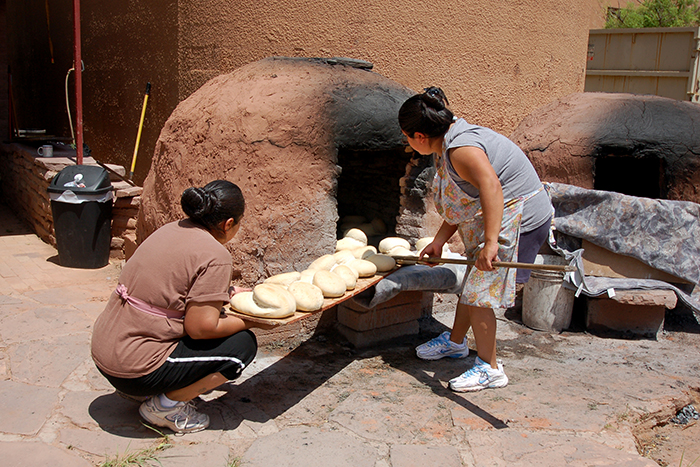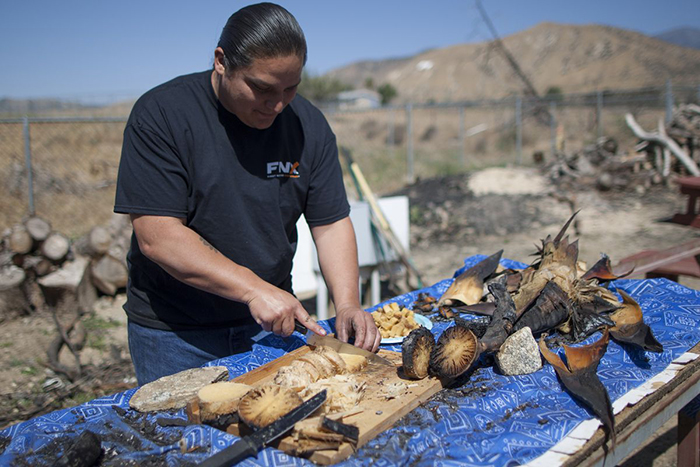Purpose and Background
Commissioned by the Centers for Disease Control and Prevention’s (CDC) Native Diabetes Wellness Program (NDWP), the purpose of this project is to develop a compendium of stories highlighting traditional foods programs in culturally and geographically diverse American Indian and Alaska Native (AI/AN) communities.
 For more than a decade, the CDC’s NDWP has supported tribally-driven efforts to promote health and help prevent type 2 diabetes in AI/AN communities. Among many promising efforts, such as the highly acclaimed Eagle Books series and the Diabetes Education in Tribal Schools K-12 Curriculum (DETS), a particularly innovative approach to diabetes prevention has been the NDWP’s Traditional Foods Program.
For more than a decade, the CDC’s NDWP has supported tribally-driven efforts to promote health and help prevent type 2 diabetes in AI/AN communities. Among many promising efforts, such as the highly acclaimed Eagle Books series and the Diabetes Education in Tribal Schools K-12 Curriculum (DETS), a particularly innovative approach to diabetes prevention has been the NDWP’s Traditional Foods Program.
From 2008 to 2014, the NDWP’s Traditional Foods Program supported 17 tribal communities through cooperative agreements. The partner grantees represent tribes and tribal organizations from coast to coast, each taking a unique approach to restoring and sustaining a healthful and traditional food system. In addition to supporting health promotion and diabetes prevention efforts, these projects addressed critical issues such as food security, food sovereignty, cultural preservation, and environmental sustainability.
 In addition to highlighting stories about Traditional Foods Program partner grantees, the NDWP was eager to learn more about traditional foods initiatives across Indian Country. At first, the gathered stories were to help educate the NDWP about how to continue this work. As the collection of stories evolved, it became apparent tribal representatives participating in the project wanted their stories to be shared with all who could learn from them, with the hope those who heard the stories would then share stories of their own. The stories presented in these reports comprise a series—a compendium of traditional foods stories—to achieve that goal.
In addition to highlighting stories about Traditional Foods Program partner grantees, the NDWP was eager to learn more about traditional foods initiatives across Indian Country. At first, the gathered stories were to help educate the NDWP about how to continue this work. As the collection of stories evolved, it became apparent tribal representatives participating in the project wanted their stories to be shared with all who could learn from them, with the hope those who heard the stories would then share stories of their own. The stories presented in these reports comprise a series—a compendium of traditional foods stories—to achieve that goal.
To collect this compendium of interviews and stories, NDWP partnered with Dr. Chelsea Wesner (Choctaw), former program planner at the University of Oklahoma’s American Indian Institute. Based on interviews with key people in each community, the stories in this compendium demonstrate how traditional foods programs are building food security, preserving cultural knowledge, and restoring health.
Compendium of Stories
Part One:
Part One - Traditional Foods in Native America
Featuring stories from the Mohegan Tribe (Connecticut), Muscogee (Creek) Nation, Oneida Nation of Wisconsin (Wisconsin), Pueblo of Laguna (New Mexico), Suquamish Tribe (Washington), and Northwest Indian College (Washington).
Part Two:
Part Two - Good Food is Power
Featuring stories from the Ramah Navajo Community (New Mexico), Standing Rock Sioux Tribe (North and South Dakota), and Tohono O'odham Nation (Arizona).
To learn more, visit the Native Diabetes Wellness Program.